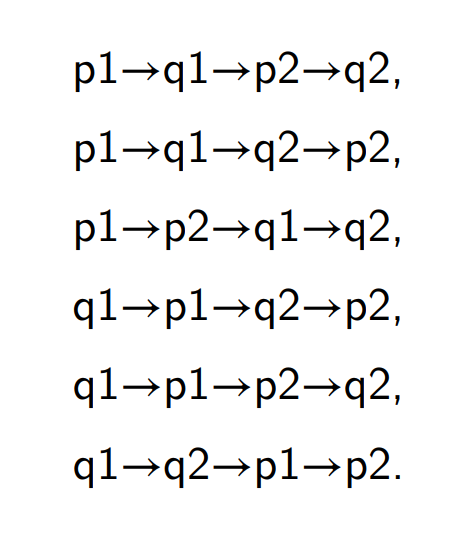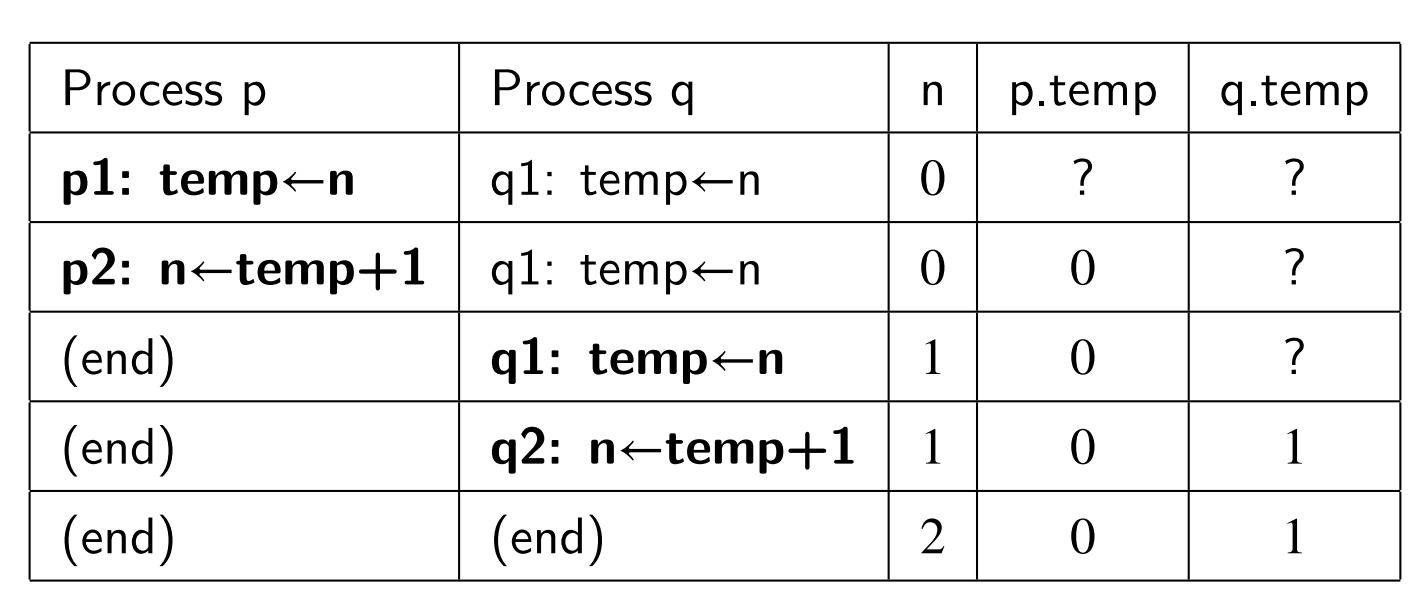Chapter 2: Abstractions
0.0(0)
0.0(0)
Card Sorting
1/15
Earn XP
Description and Tags
Study Analytics
Name | Mastery | Learn | Test | Matching | Spaced |
|---|
No study sessions yet.
16 Terms
1
New cards
interleaving
process or methodology to make a system more efficient, fast, and reliable by arranging data in a noncontiguous manner
when we have multiple processes running, have to account for all the different possible ways
the scheduler can interrupt 1 process and pick up a 2nd process when it chooses
when we have multiple processes running, have to account for all the different possible ways
the scheduler can interrupt 1 process and pick up a 2nd process when it chooses

2
New cards
state transition diagram
what you put in these states are:
the statements that are going to be executed next
the variables and their current values
when a particular process goes, assume what the code that was up executes
the statements that are going to be executed next
the variables and their current values
when a particular process goes, assume what the code that was up executes

3
New cards
atomic statement
statement cannot be interleaved at a lower level of abstraction
4
New cards
computation
directed path through a graph (state-transition diagram) starting from the initial state and ending in a halt state
5
New cards
scenario
table representation of a computation

6
New cards
concurrency analysis
- specify which statements are atomic
- assume arbitrary interleaving of atomic statements
- is the algorithm correct for all interleavings?
- assume arbitrary interleaving of atomic statements
- is the algorithm correct for all interleavings?
7
New cards
safety property
"always"
P must be true in every state in every computation
usually rules out bad behavior
P must be true in every state in every computation
usually rules out bad behavior
8
New cards
liveness property
"eventually"
in every computation, there is some state in which P is
true
ensures the system does what it is supposed to do
in every computation, there is some state in which P is
true
ensures the system does what it is supposed to do
9
New cards
duality
if P is a safety property, then ¬P is a liveness property
¬(∀x R : P) ≡ (∃x R : ¬P)
if P is a liveness property, then ¬P is a safety property
¬(∃x R : P) ≡ (∀x R : ¬P)
¬(∀x R : P) ≡ (∃x R : ¬P)
if P is a liveness property, then ¬P is a safety property
¬(∃x R : P) ≡ (∀x R : ¬P)
10
New cards
weakly fair
a scenario is weakly fair if, at any state in the scenario, a statement that is continually enabled, eventually appears in the scenario
if a statement is capable of running in a weakly fair scenario, it will eventually run
if a statement is capable of running in a weakly fair scenario, it will eventually run
11
New cards
weak fairness
fairness depends on the scheduling policy of the
operating system
operating system
12
New cards
critical reference
variable v is a critical reference if:
(a) it is assigned in one process and has an occurrence
in another process, or
(b) it occurs in an expression in one process and is
assigned in another
(a) it is assigned in one process and has an occurrence
in another process, or
(b) it occurs in an expression in one process and is
assigned in another
13
New cards
limited critical reference (LCR)
program satisfies LCR if each statement contains at
most 1 critical reference
if an algorithm satisfies LCR, then it behaves the same
regardless of whether its statements are atomic (do not need to modify your algorithm with temp to mimic the lower level)
most 1 critical reference
if an algorithm satisfies LCR, then it behaves the same
regardless of whether its statements are atomic (do not need to modify your algorithm with temp to mimic the lower level)
14
New cards
volatile variable
specifying a variable as volatile instructs the compiler to load and store the value of the variable at each use,
rather than to optimize away these loads and stores.
rather than to optimize away these loads and stores.
15
New cards
thread
programs during execution that is under the control of a process
16
New cards
threads vs processes
during execution that is under the control of ..
- thread: a process
- process: an operating system
communicate..
- thread: via shared memory
- process: via message passing
- thread: a process
- process: an operating system
communicate..
- thread: via shared memory
- process: via message passing